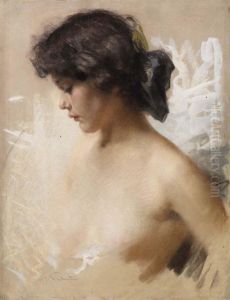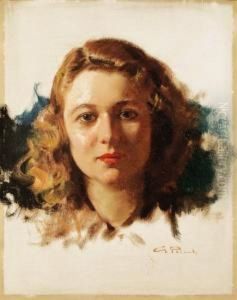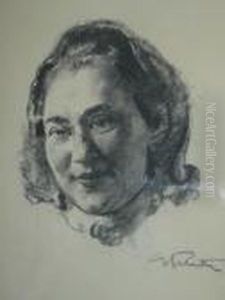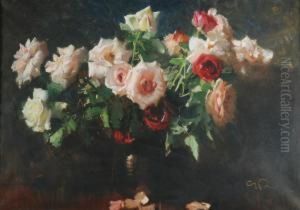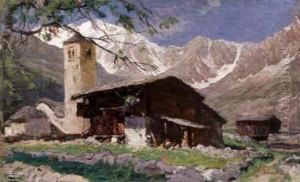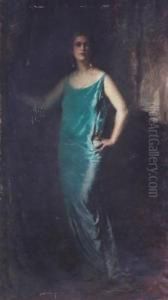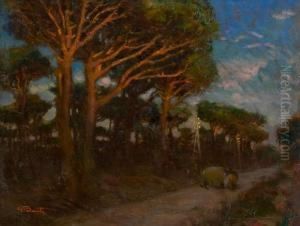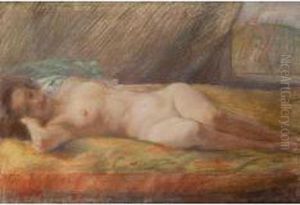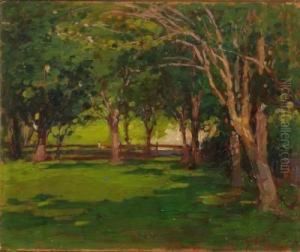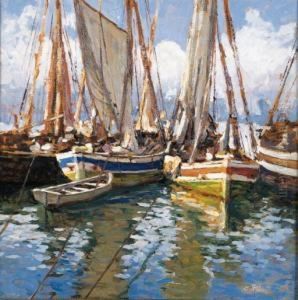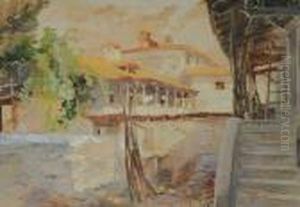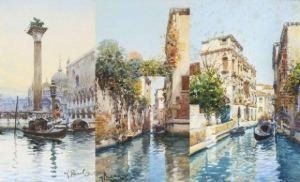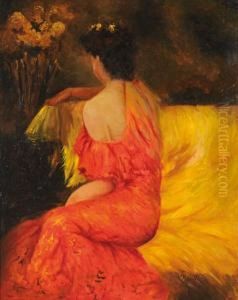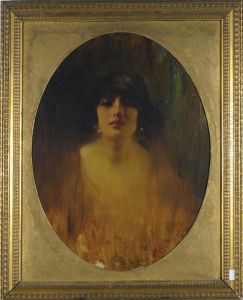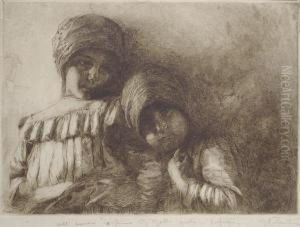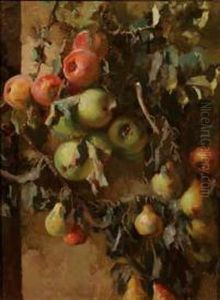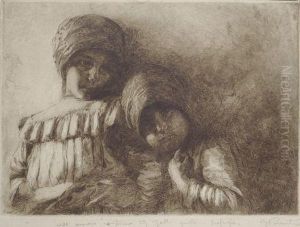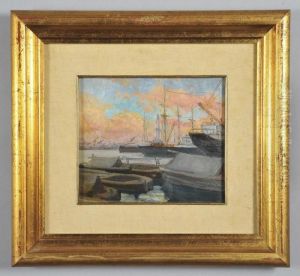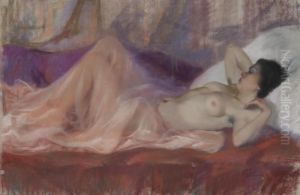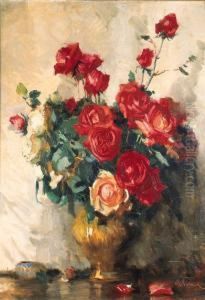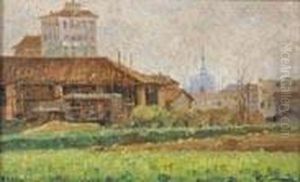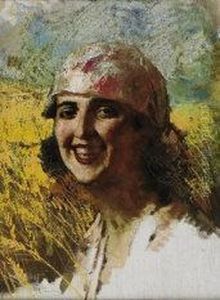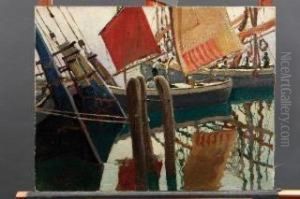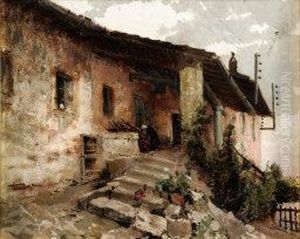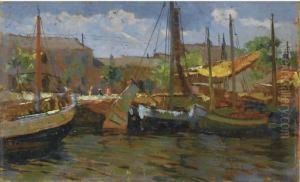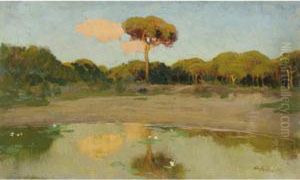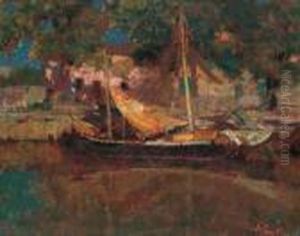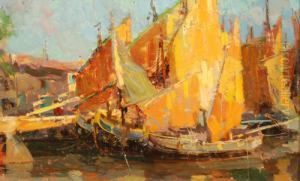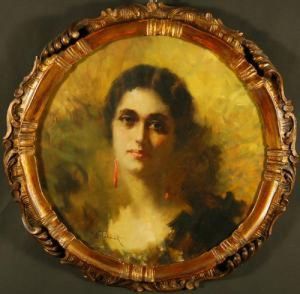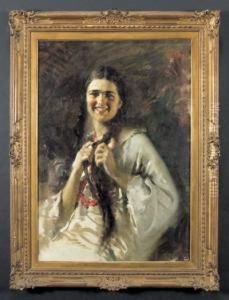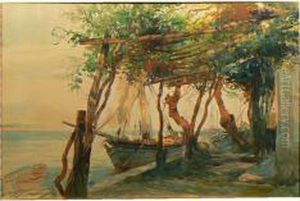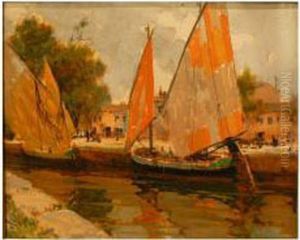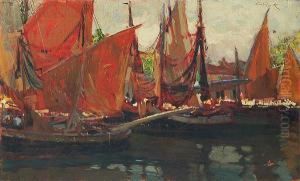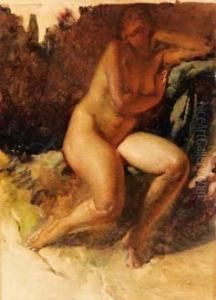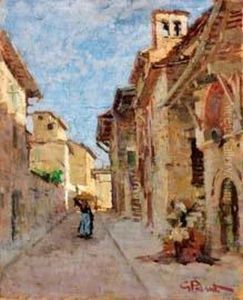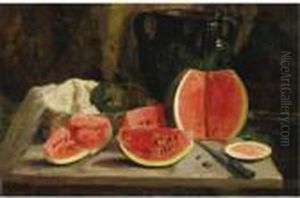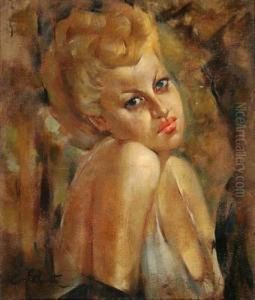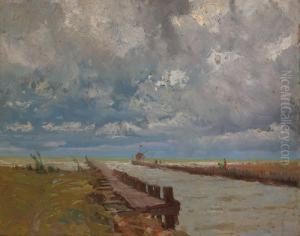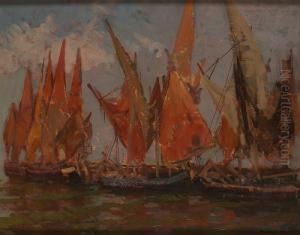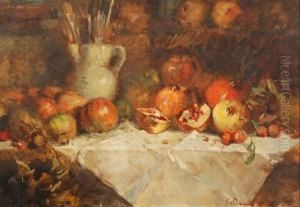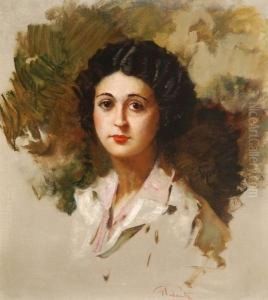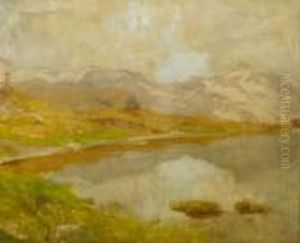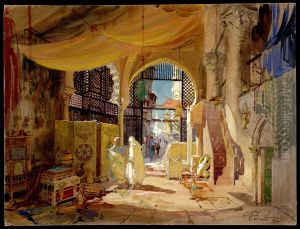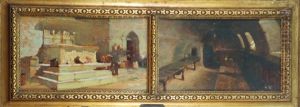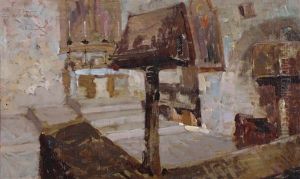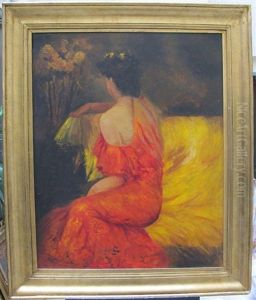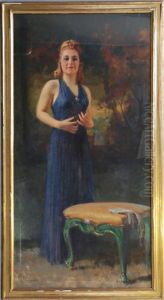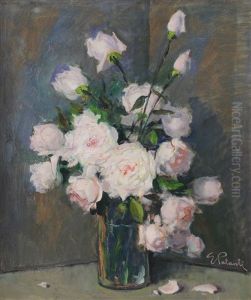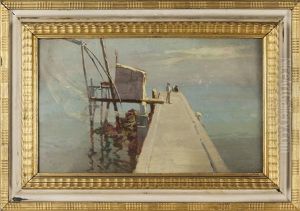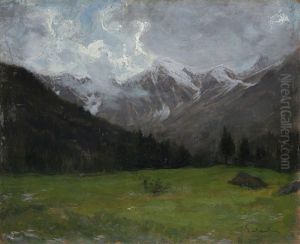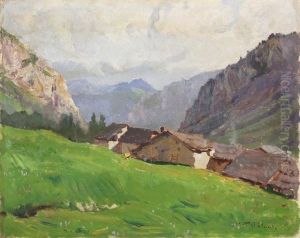Giuseppe Palanti Paintings
Giuseppe Palanti was an Italian painter, designer, and educator born on May 13, 1881, in Milan, Italy. He is often remembered for his contributions to portrait painting and his work within the sphere of advertising design during the early 20th century. Palanti attended the Brera Academy in Milan, where he studied under the guidance of Cesare Tallone, a respected Italian painter. His education laid a foundation for his classical approach to art, which he later combined with a more modern aesthetic.
Palanti's career was marked by his versatile talents. He was adept at both traditional fine arts, such as painting and sculpture, as well as graphic design. His ability to merge classical techniques with the burgeoning art nouveau and later art deco styles allowed him to create distinctive works that captured the spirit of his era. His portraits, in particular, were known for their elegant and refined qualities, often depicting the bourgeoisie and aristocracy of the time.
In addition to his work as an artist, Palanti was also a dedicated educator. He taught at the Brera Academy, where he once studied, and influenced a generation of Italian artists. His teaching methods were rooted in the belief that art should be accessible and that artists should engage with contemporary methods and styles.
Throughout his career, Palanti also ventured into the world of advertising. He designed posters, logos, and other promotional materials for various Italian companies, contributing to the development of commercial art in Italy. His advertisement designs often featured striking imagery and bold typography, which were innovative for the time.
Palanti's work was exhibited in numerous shows and garnered attention both in Italy and abroad. Despite his success, he remained dedicated to his art and continued to explore new avenues of expression throughout his life.
Giuseppe Palanti passed away on August 13, 1946, in Milan. Today, he is remembered for his artistic versatility, his contributions to the world of Italian portrait painting, and his role in the development of modern advertising design. His works are part of collections in various Italian museums and continue to be studied for their blend of traditional craftsmanship and modern sensibility.
